Recycling – Polymer – Packaging 17-09-2022 - Arhive
Recycling – Polymer – Packaging
-Siemens and Shell sign MoU to advance low-carbon, highly efficient energy solutions
Siemens Smart Infrastructure and Shell Global Solutions International BV have signed an MoU to collaborate on developing low-carbon and highly efficient energy solutions that support the energy transition, said Hydrocarbonprocessing.
The agreement will focus on projects that produce green hydrogen for industrial applications at Shell and its customers, as well as enhancing collaboration in the areas of biofuels and circular chemistry. Under the MoU, Siemens and Shell will create solutions that increase energy efficiency and generate sustainable power, consisting of, but not limited to, digitalization, efficient networks, and the production, distribution, and application of green hydrogen. The partnership, inked with Siemens’ Electrification and Automation business unit, has the potential to strengthen synergies for both parties. While Siemens intends to work with Shell to accelerate the latter’s transition towards net-zero operations, Shell seeks to supply Siemens and its affiliates with low carbon products that reduce emissions across the supply chain, in Siemens’ operations, and in the use phase of Siemens products, consisting of but not limited to supply of biofuels.
“Siemens is committed to decoupling electrification from fossil fuel resources. Partnerships are key to driving this effort and transitioning towards sustainable energy supplies,” said Stephan May, CEO of Electrification and Automation at Siemens Smart Infrastructure. “The partnership with Shell fits perfectly with Siemens’ vision of electrifying the world, while helping industry and infrastructure customers reduce their carbon footprint and achieve their sustainability goals.” Recycling – Polymer – Packaging
Siemens has been an electrical equipment – switchgears, pumps, transformers, electrical Scada – supplier to Shell for more than a decade. Over the past years, it has evolved into a collaborative solutions supplier, spanning the full range of its electrification and automation portfolio and further enhanced by Joint Industry Program 33 (JIP33) equipment standardization, a set of standardized industry procurement specifications for the oil and gas industry. Shell attaches great importance to the relationship with Siemens, which is paving the way to accelerating the energy transition.
“Deep collaboration with partners is essential for the delivery of low-carbon energy solutions for the future. Building on our existing relation with Siemens, I expect this MoU to enable our teams to work even closer together,” said Graham Henley, Senior Vice President Engineering & Project Capability at Shell. “Siemens’ broad range of expertise in electrification and automation, together with Shell’s engineering and project delivery capability and ambition in the energy transition will prove to be a powerful combination.”
The MoU stems from this relationship and from working together on several projects since 2010. One of the key milestones advancing green hydrogen is the recently announced construction of Shell’s Holland Hydrogen 1 (HH1) project on the Maasvlakte in Rotterdam. With a capacity of 200 megawatts and 60 tons of hydrogen per day, HH1 is planned to be one of the largest green hydrogen production plants in the world and the biggest in Europe. Siemens’ Electrification and Automation business plays an important role in the project’s planning, construction, and execution, as the power distribution and substation automation supplier.
It will also be involved in the operation of the plant, which is scheduled to go on-line in 2025, through a servicing contract. The plant will produce hydrogen using electricity generated by wind turbines in the North Sea.
Siemens and Shell have adopted a collaborative and agile way of working on this large project. Close consultation and decision-making on a daily basis have helped reduce development time – of the design of the power distribution system – by close to half, from 18 months to 9 months, as of the publication of this release.

-Polish PKN Orlen is considering the possibility of building LDPE production in Plock
Poland’s PKN Orlen is considering building a high-pressure polyethylene (LDPE) production facility in Plock, the company said in a statement.
Production will be built in central Poland, where the main state-controlled Orlen petrochemical plant is located.
If the investment is realized, Orlen will expand its petrochemical portfolio with a new product, namely LDPE.
Earlier it was noted that LyondellBasell will provide PKN Orlen (Plock, Poland) with a license for its high-pressure polyethylene (LDPE) technology for the new plant. PKN Orlen’s planned LDPE plant with a capacity of 250 thousand tons per year will use LyondellBasell Lupotech T.
“According to global forecasts, the value of the petrochemicals and base polymers market is expected to double by 2030. That is why we are investing heavily in this area of our activities, effectively using the potential of the plant in Plock,” said Daniel Obaitek, CEO of Orlen. Recycling – Polymer – PackagingT
According to him, Poland is the largest consumer of LDPE in Central Europe, and by 2025 it will account for almost 35% of consumption in the region.
Demand for LDPE in Poland and Central Europe is about 300,000 tonnes per year and almost 800,000 tonnes per year, respectively, with the latter figure expected to rise to 890,000 tonnes per year by 2025, he added.
According to Orlen, the production capacity of LDPE in Central Europe is currently 520 thousand tons per year.
According to the ScanPlast review, in January-June, polyethylene supplies to the Russian market (excluding exports to Belarus and Kazakhstan) amounted to 1,274.37 thousand tons, which is 13% more than a year earlier. The supply of all types of polyethylene has increased, including due to a reduction in exports.
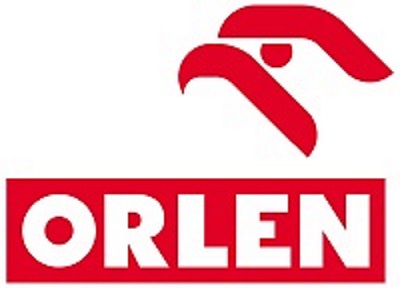
-New Material Is Capable of ‘Thinking’
Reconfigurable integrated circuits give a polymer material the ability to process sensory information and react to external stimuli similarly to humans.
Researchers have developed a material that can process certain types of external stimulation into “thought” similar to that of a human brain, they said.
Collaborators from Penn State and the U.S. Air Force—led by principal investigator and Professor of Mechanical Engineering Ryan Harne—developed the soft, polymer material, which functions using a reconfigurable alternative to integrated circuits that are key to processing information, they said. Integrated circuits can compute signals and information, which is scientists’ realization of information processing similar to the brain’s role in the human body, researchers said. Until now, integrated circuits primarily have been used to process data in silicon semiconductors, they added. Recycling – Polymer – Packaging
Harne’s team has now used integrated circuits in a soft polymer material that acts like a brain that can receive and process digital strings of information, resulting in new sequences of digital information that can control reactions, Harne said.
“We have created the first example of an engineering material that can simultaneously sense, think, and act upon mechanical stress without requiring additional circuits to process such signals,” he said in a story posted to Penn State’s site.
Researchers have developed a material that can process certain types of external stimulation into “thought” similar to that of a human brain, they said.
Collaborators from Penn State and the U.S. Air Force—led by principal investigator and Professor of Mechanical Engineering Ryan Harne—developed the soft, polymer material, which functions using a reconfigurable alternative to integrated circuits that are key to processing information, they said. Integrated circuits can compute signals and information, which is scientists’ realization of information processing similar to the brain’s role in the human body, researchers said. Until now, integrated circuits primarily have been used to process data in silicon semiconductors, they added. Polymers-moisture-measures – PET
Harne’s team has now used integrated circuits in a soft polymer material that acts like a brain that can receive and process digital strings of information, resulting in new sequences of digital information that can control reactions, Harne said.
“We have created the first example of an engineering material that can simultaneously sense, think, and act upon mechanical stress without requiring additional circuits to process such signals,” he said in a story posted to Penn State’s site.
How the Material Works
Researchers built upon previous work to develop the novel material, which includes reconfigurable circuits that can realize combinational logic. The team had already developed a soft, mechanical metamaterial that can “think” about how forces are applied to it and respond using programmed materials, which was outlined in a paper in Nature Communications last year. That material, however, could only operate on binary input-output signals, not compute high-level logical operations, researchers said.
The new material goes much further in functionality thanks to the inclusion of reconfigurable circuits, they said. The circuits give it the ability to respond to external stimuli by translating the input into electrical information that is then processed to create output signals. Recycling – Polymer – Packaging
For example, the material can use mechanical force to compute complex arithmetic or detect radio frequencies to communicate specific light signals, Harne said. These are just two of the many possibilities for the material given that integrated circuits can be programmed to perform numerous tasks, he said.
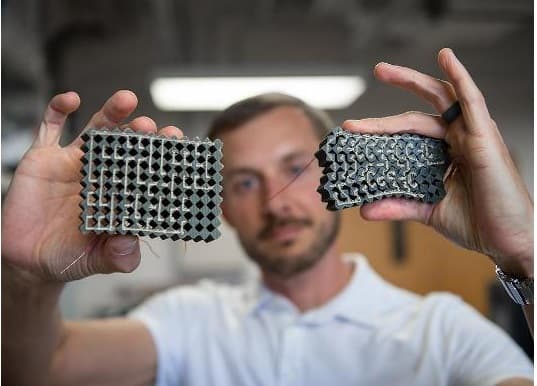
-Dow and Nexus to build recycling facility
Dow and Nexus Circular have signed a detailed letter of intent (LOI) for Dow to secure the production output of a newly constructed advanced recycling facility in Dallas, Texas.
The new facility will process and convert over 26,000 MTs annually of previously non-recycled plastic into circular feedstock that will be delivered back to Dow as a raw material to create new, recycled plastics for food-contact, health, hygiene, and fitness applications.
The LOI builds on Dow and Nexus Circular’s initial joint effort as the chosen advanced recycler for the Hefty EnergyBag program, launched in collaboration between Dow, Reynolds Consumer Products and others, to collect hard-to-recycle plastics at residential curbside to convert them into valued resources. The announcement marks an evolution of the companies’ deepening relationship, from converting hard-to-recycle plastics into energy, to now converting circular feedstock into actual plastic products, making the converted material truly circular. Recycling – Polymer – Packaging
Nexus Circular uses a proprietary process and pyrolysis (high temperature decomposition) technology to transform waste plastics into high-quality circular feedstocks its partners use in the production of circular polymers. The company says it has optimized the technology to create a highly efficient, economic, commercial and scalable system for delivering cost-effective, high quality and environmentally friendly circular products for its partners and customers. In 2020, Nexus Circular was named a grant recipient of Dow’s Business Impact Fund for the development of pre-processing to incorporate post-consumer, hard-to-recycle plastics collected through the Hefty EnergyBag program in Cobb County, GA.
This current expansion of the Dow-Nexus collaboration into Dallas, among other locations, will result in the further collection and conversion of landfill-bound plastics into plastic products that will be used in consumer applications, in order to help close the used plastics loop.
“Expanding our past, scaled success with Nexus to drive production of high-quality circular feedstocks, the new facility in Dallas marks an important step in meeting unmet market demand for circular plastics in Texas and other markets,” said Manav Lahoti, Global Sustainability Director for Hydrocarbons at Dow. “We now have an even greater opportunity to close the loop on Dow’s materials through the delivery of Nexus’ circular products back to our plants, further accelerating progress toward our 2030 goal to enable 1 million metric tons of plastic to be collected, reused or recycled.”
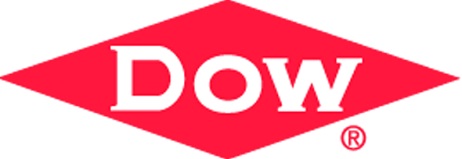
-Moisture Monitor Verifies Dryness of Polymers in Real Time
Connected to the drying hopper outlet, the new system from Conair detects moisture levels as low as 10 parts per million.
A new sensing device detects residual moisture levels as low as 10 parts per million (PPM) in polymers in real time. Installed at the outlet of a drying hopper, the Moisture Minder from Conair achieves throughput rates of 20 to 5,000 lb/hr.
The real-time monitor measures material moisture continually; set points can be configured to issue an alert when the specified moisture level drifts outside prescribed limits. All readings are stored for historical trending, allowing managers to recognize when conditions begin to shift in the wrong direction and make dryer-control changes to avoid compromising the entire volume of material inside the drying hopper. These historical records can also be used for process validation, confirming that parts were manufactured under acceptable conditions. Recycling – Polymer – Packaging
Using the Moisture Minder in conjunction with Conair’s Drying Monitor provides the earliest possible indication that drying conditions are not right. Placed vertically in the drying hopper, the Drying Monitor probe measures temperature at multiple levels in the bed of material being dried, detecting anomalies that could result in higher-than-acceptable moisture levels in the resin as it leaves the hopper hours later.
The Moisture Minder also can be retrofitted to existing systems.
Two models are available: The M5 unit detects moisture levels between 10 and 1,000 ppm, while the M10 tracks moisture between 300 and 3,000 ppm. The all-electric sensors have no moving parts to maintain or change. Operation is passive, so there is no impact on production rates. A yearly calibration and cleaning are the only regular maintenance chores, said Conair.
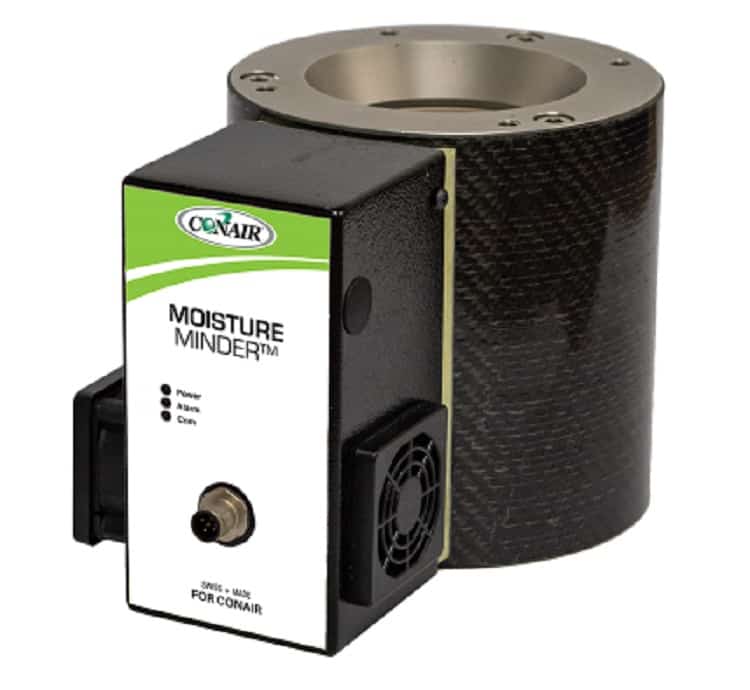
-Brightmark forms buoy plastic recycling partnership
San Francisco-based Brightmark LLC has launched a plastic recycling partnership with the Florida Keys National Marine Sanctuary (FKNMS) in an effort to reduce materials from going to the landfill, said Recyclingtoday.
FKNMS has mooring and informational buoys to mark ecological reserves and provide an option for boats to tie up to as opposed to anchoring to help protect ocean reefs below. Prior to this partnership, FKNMS had to send these buoys to landfill when they reached end-of-life status since they were considered too difficult to recycle. Through the new partnership with Brightmark, FKNMS will send Brightmark these buoys and downlines to recycle them and convert them into circular plastics and lower carbon fuel and wax.
According to a news release from Brightmark, the partnership follows what it calls “a successful pilot phase,” the two groups will now recycle plastic buoys and downlines from the sanctuary’s upper and lower Keys locations to help decrease marine plastic pollution in the area. The two groups aim to expand this program nationally.
“Our partnership with the sanctuary is an essential and first-of-its-kind collaboration that will pull and divert plastic from our oceans,” says Bob Powell, Brightmark founder and chief executive officer. Recycling – Polymer – Packaging
“This program is another proof point of how our innovative advanced recycling technology can play a critical role in ‘reimaging waste’ to solve the plastic waste crisis in our oceans with a truly circular solution.”
“This initiative elevates our commitment to protect the environment,” says Sarah Fangman, superintendent of the Florida Keys National Marine Sanctuary. “I’m proud that buoy team member Benjamin D’Avanzo recognized the need for a sustainable alternative to our plastics waste and pursued this partnership with Brightmark.”
Brightmark says it has produced a short documentary on FKNMS’ buoy team to follow its daily operations and show how materials are sent to be recycled by Brightmark.
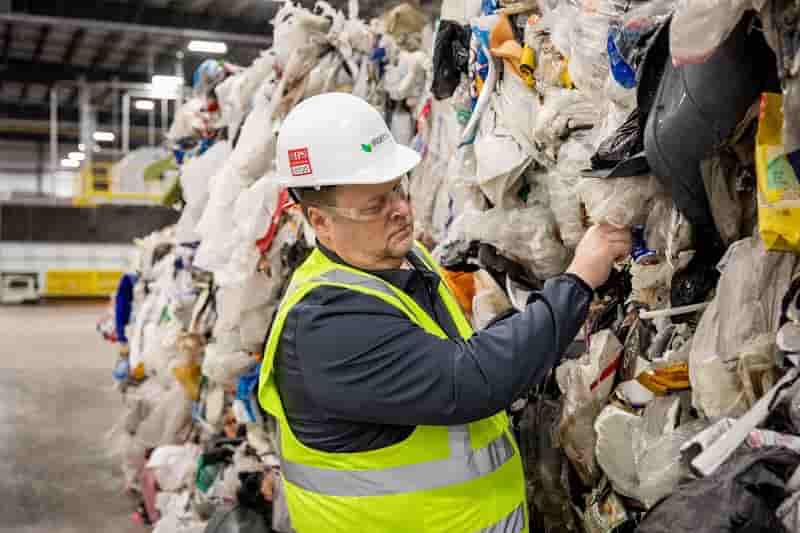
-Europe mixed polyolefin/monomaterial bale spread reaches record low
In Europe, the mixed polyolefin market has narrowed throughout the year.
The spread between European 90 percent mixed polyolefin bale values and monomaterial polyolefin bale values is at its lowest on record. This is with the exception of low-density polyethylene (LDPE) postcommercial flexible bales, where the spread has been at its narrowest since January.
The value of 90 percent mixed polyolefin bales is at 50 euros per metric ton on average below that of monomaterial high-density polyethylene mixed-colored bales, 75 euros per metric ton on average below postconsumer polypropylene (PP) bales and 100 euros per metric ton on average below black postindustrial PP bales and natural LDPE flexible postcommercial 98/2 bales. Recycling – Polymer – Packaging
In addition, there was talk in recycled polyolefin markets as of the week of Sept. 5 that players are starting to restrict activity to core markets. This is amid high energy costs, macroeconomic weakness, substitution to virgin and narrowing margins for nonpackaging markets such as construction and automotive.
Meanwhile, downstream spot recycled mixed polyolefin pellet prices—typically used by nonpackaging mechanical recycling applications such as construction—were heard as low as 760 euros per metric ton ex-works northwest Europe as of the week of Sept. 5.
Despite these factors, players are not currently seeing downward pressure on 90 percent mixed polyolefin values. This was, in part, attributed to low availability and partly attributed to pyrolysis-based chemical recyclers absorbing demand loss from mechanical recycling, as pilot plants continue to scale up. The onboarding of pyrolysis-based chemical recycling is expected to further tighten availability.
The 90 percent mixed polyolefin merchant market availability has narrowed throughout the year as waste managers have increasingly onboarded capacity to reprocess material captively.
Most of the chemical recycling market remains precommercial. Although volumes are expected to increase significantly in 2023 and 2024, most expect it to take at least five years for the market to reach scale.
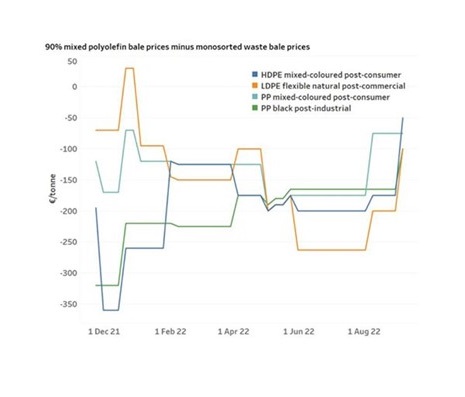
-Huhtamaki and Stora Enso aim to boost recycling with The Cup Collective
Huhtamaki and Stora Enso have joined forces to launch a new European paper cup recycling initiative, The Cup Collective.
The programme, managed by Co-cre8, aims to recycle and capture the value of used paper cups on an industrial scale. Initially the programme will be implemented across the Benelux.
The first paper cup collection bins will be available in restaurants, cafés, office buildings and transport hubs in the Brussels and Amsterdam metropolitan areas. The Cup Collective aims to recycle half a billion paper cups in the first two years.
Eric Le Lay, president, fibre foodservice EAO at Huhtamaki, said: “Huhtamaki is a world leader in developing and manufacturing recyclable fibre products. For us, every cup counts. Recycling – Polymer – Packaging
We want to go to the next step and ensure that recyclable cups also get effectively recycled. We have combined the best expertise from Huhtamaki and Stora Enso to create this new vision for industrial scale cup collection and recycling.”
Hannu Kasurinen, EVP, Stora Enso Packaging Materials division, added: “Stora Enso wants to accelerate the circularity of all packaging materials and we have an excellent foundation to make that happen. The paperboards we make are designed to be recycled and our own production sites, including Langerbrugge in Belgium, can process and recycle paper cups into new fiber-based products. By partnering with Huhtamaki and Co-cre8 we will now be able to provide a platform to collect and capture the value of paper cup fibers on an industrial scale.”
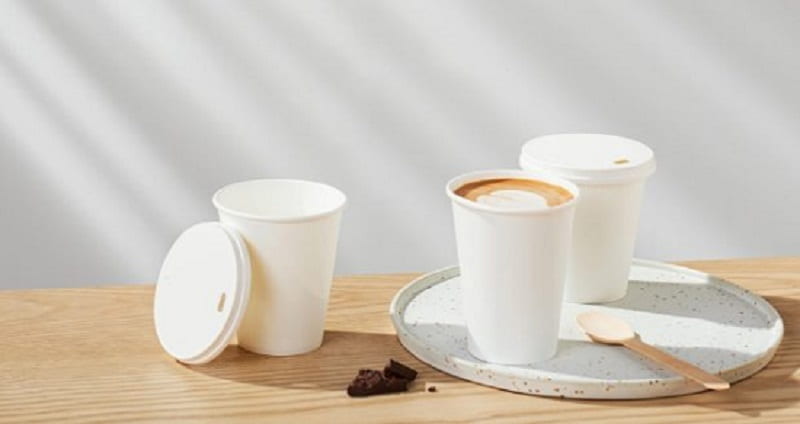
Recycling – Polymer – Packaging
